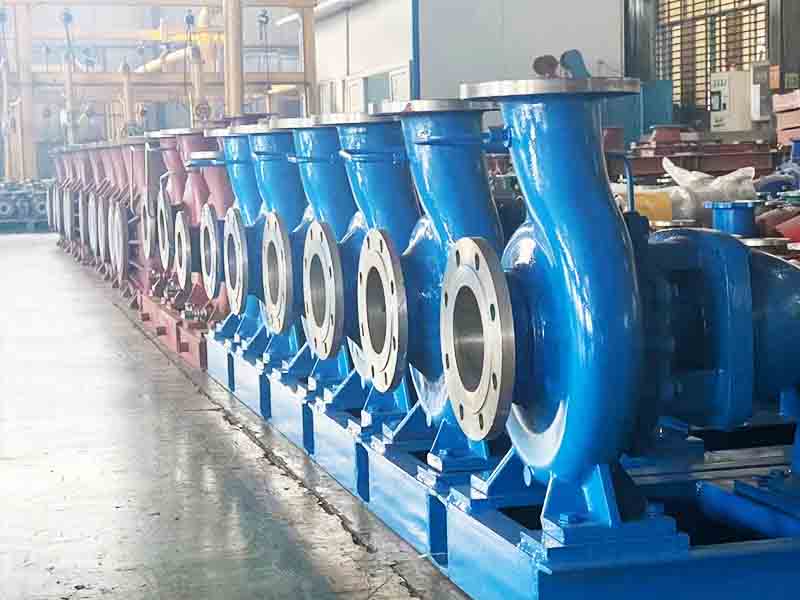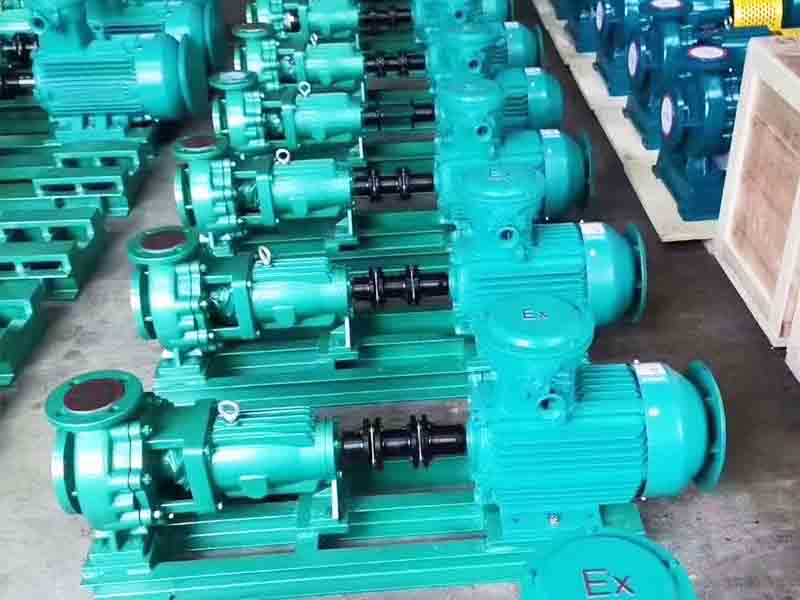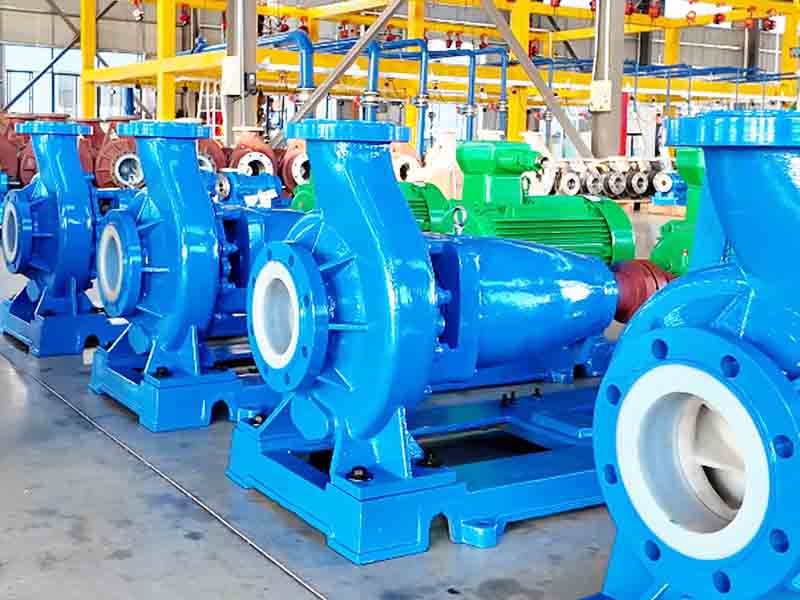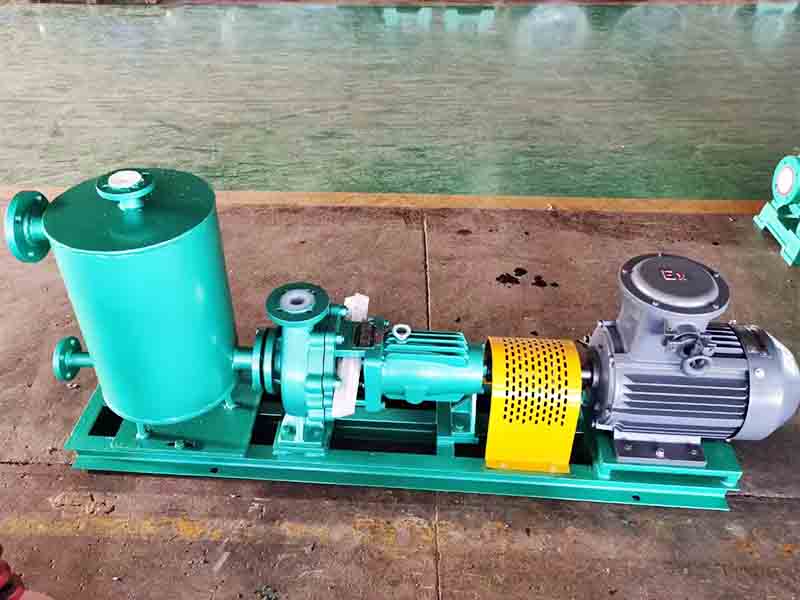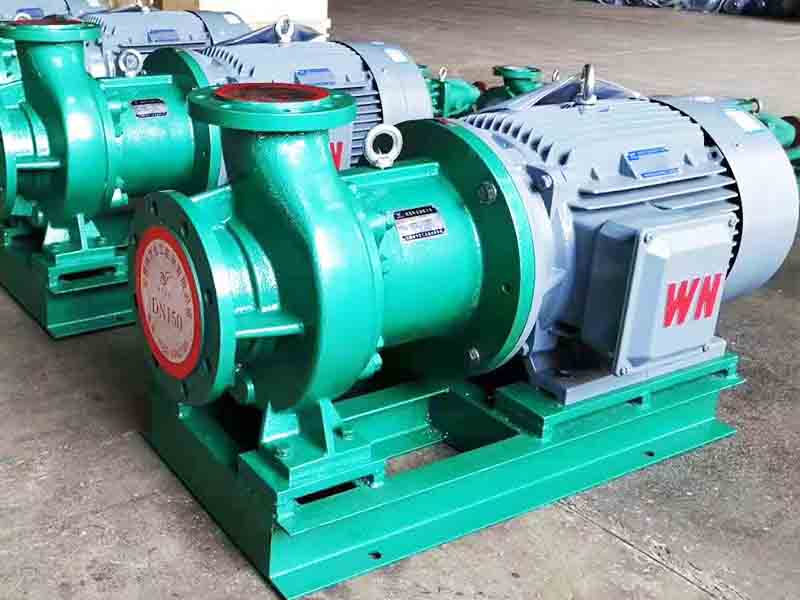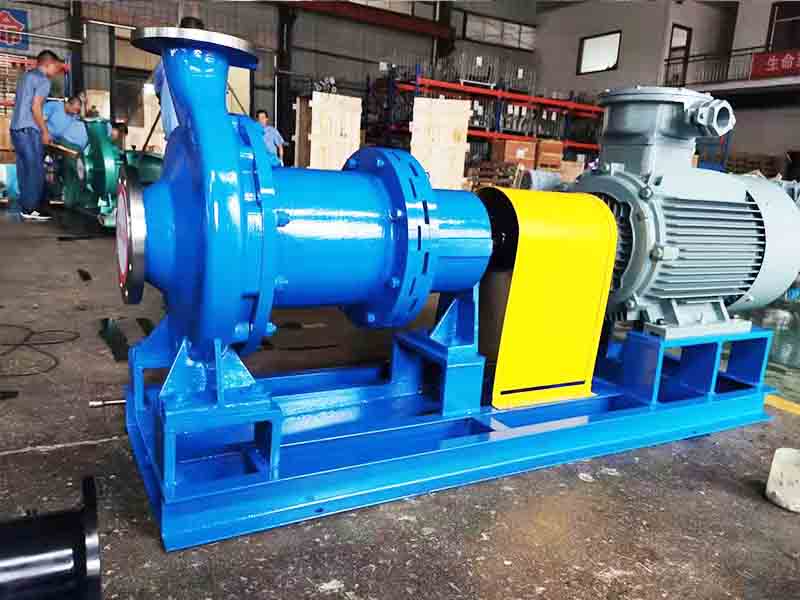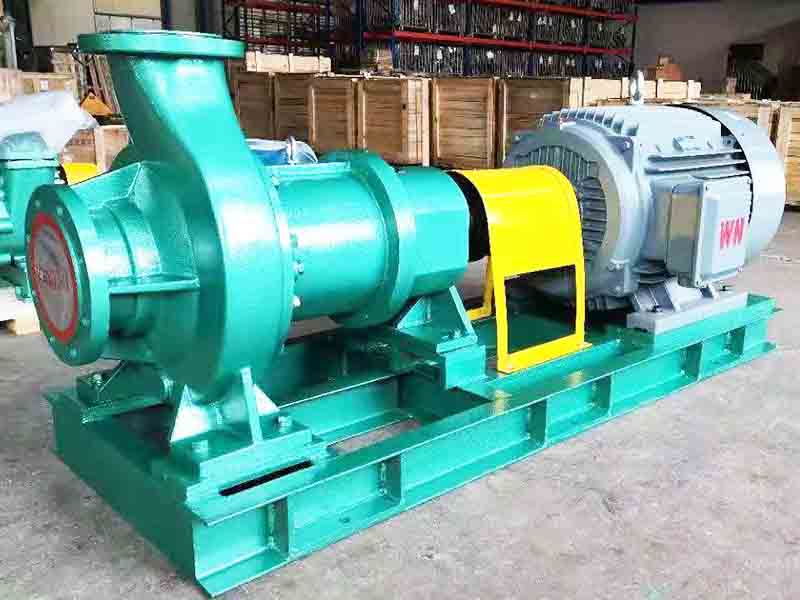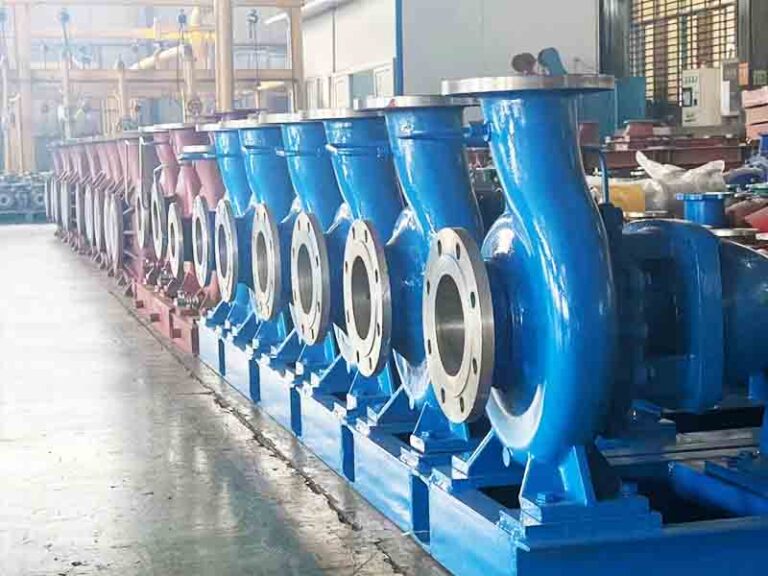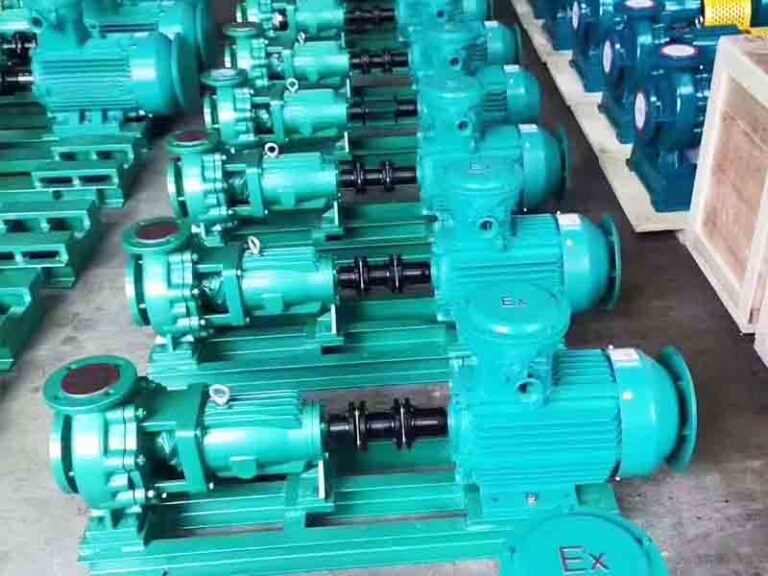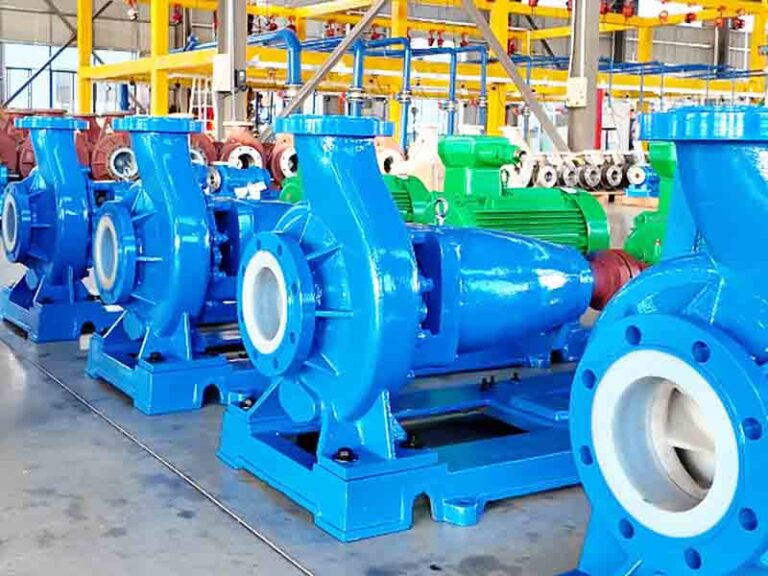In industrial production, the stable operation of pumps is crucial to the smooth flow of the entire process. However, an often overlooked but critical factor – Net Positive Suction Head (NPSH) – has a profound impact on pump performance and life. In this paper, we will discuss the two core concepts of NPSH: the required Net Positive Suction Head (NPSHR) and the effective Net Positive Suction Head (NPSHA), and analyze their principles, calculations and their interrelationships.
What is NPSH (Net Positive Suction Head) and Why Does it Matter
The Role of NPSH in the Pump System
The operating principle of a self-priming pump is based on the pressure difference between the inlet and outlet. The high pressure at the inlet drives the fluid flow to the low pressure area at the outlet. However, as the fluid flows through the diesel pump, the pressure decreases along the flow path. Once the inlet pressure falls below the vapor pressure of the fluid, bubbles form at the inlet, which then suddenly burst, a phenomenon known as cavitation. The NPSH is the key indicator to measure and prevent cavitation from occurring.
NPSH as a Design and Operational Element
For pump designers, NPSH is an important basis for ensuring that the centrifugal pump will not be damaged internally by cavitation under all specified operating conditions. Cavitation is extremely harmful to the centrifugal electronic pump, not only will make the pump run noisy, as in the concrete mixer mixed with gravel as noisy, but also reduce the pump’s conveying capacity, and more seriously, it will be stripped from the pump wall of material, the formation of craters, resulting in permanent damage.
What Is NPSHr For Pumps
Definition and Importance
NPSHR (Net Positive Suction Head Required) refers to the minimum pressure required at the pump suction port to prevent cavitation. It is a characteristic parameter of the electric-driven centrifugal pump itself, and different pump designs, sizes, speeds (RPM) and operating conditions will affect the NPSHR value. For example, a high speed, small size pump may have very different NPSHR requirements than a low speed, large size pump.
Determination of NPSHR
Manufacturers typically test pumps at constant flow conditions. During the test, the suction pressure (i.e. NPSH) is gradually reduced while the change in discharge pressure (differential pressure head) is observed. The NPSH value is defined as NPSHR when the discharge pressure begins to drop by 3% due to cavitation, using water at 20°C as the test medium. Therefore, NPSHR is sometimes referred to as NPSH3 or NPSH3%. For multistage pumps, only the first stage is considered in determining the 3% pressure drop. Pump manufacturers typically provide NPSHR data on the electric centrifugal pumps performance curve.
How is NPSH-R measured
Definition and Calculation
NPSHA (Effective Net Positive Suction Head) is the absolute pressure at the pump suction port, which is a property of the system and needs to be calculated based on the system configuration on the suction side of the type of self-priming pump. It is calculated as NPSH – A = (((Pe-Pv)/ρ) x10.2)+Hz-Hf+(V²/2g).
Where Pe is the absolute pressure in the conveyed vessel (bar), Pv is the vapor pressure of the fluid (bar), ρ is the density of the fluid (kg/dm³), Hz is the lowest level height above the easy self-priming pumps(m, or negative if below the pump), Hf is the friction loss of the piping on the suction side (m), V is the fluid flow velocity at the pump flange (m/s), and g is the acceleration due to gravity (9.81m/s²). ). Alternatively, NPSHA can be determined from actual measurements on the suction side of the system.
Factors affecting NPSHA
NPSHA is not fixed and can be affected by a number of factors. The pump’s operating environment, such as constant temperature, fluctuations in temperature and atmospheric pressure due to weather changes, and occasional or gradual increases in friction losses that may occur during the life of the system, all have an effect on the NPSHA. Therefore, these factors must be fully considered when calculating the NPSHA to ensure the accuracy of the results.
NPSHA vs NPSHR
Avoiding Cavitation
In order to ensure the normal operation of the magnetic drive pump and eliminate the risk of cavitation, the NPSHA must be higher than the NPSHR. when the NPSHR is greater than the NPSHA, the liquid will be vaporized, the formation of steam bubbles in the impeller into the high-pressure region will be a sudden rupture, resulting in cavitation phenomenon, the pump will be similar to the sound of the internal marble collision or grinding, seriously impairing the performance and life of the mag-drive pump.
NPSH Margin
NPSH margin refers to the safety factor that NPSHA exceeds NPSHR, usually there are two ways of expression: one is the ratio of NPSHA and NPSHR, for example, NPSH margin ratio is 1.1, which means that NPSHA is 10% larger than NPSHR; the second is the difference between NPSHA and NPSHR, in general, it should be ensured that the NPSH margin is not less than 0.5m (that is, NPSH – A ≥ NPSHR).
Generally speaking, it should be ensured that the NPSH margin is not less than 0.5m (i.e. NPSH – A ≥ NPSH – R + 0.5m). Different industries have different requirements on NPSH margin, such as petroleum/hydrocarbon processing industry, which generally requires the NPSH margin to be the ratio of 1.1 or the difference of 1.0m; for chemical processing industry, the NPSH margin is usually in the range of the ratio of 1.1 – 1.2 or the difference of 0.6m – 1.0m.
Dynamic Characteristics of NPSHR and NPSHA
Influence of Flow Rate and Temperature
Both NPSHR and NPSHA change with flow and temperature. As the flow rate increases, the NPSHR increases and the NPSHA decreases due to the increased friction loss and head requirement at high flow rates. Also, changes in temperature affect the vapor pressure of the fluid, which in turn affects the NPSHR and NPSHA.
Reassessment of NPSH Margins
Due to the dynamic nature of the NPSHR and NPSHA, it is important to re-evaluate the NPSH margin when pump capacity, flow rate or temperature changes occur. Only in this way can potential cavitation risks be detected in time to ensure safe pump operation.
Role of CFD Simulation in Determining NPSH
For System-Level Analysis
Computational Fluid Dynamics (CFD) simulations are able to predict flow conditions within the entire hydraulic system, providing valuable information for NPSHA calculations. Steady-state, single-phase, incompressible fluid simulations, combined with heat transfer analysis, can accurately determine the NPSHA at the pump location and provide a reliable basis for system design.
For Pump Design
For pump designers, CFD simulation can visualize the hydraulic design of the pump and optimize the efficiency and operating range of the pump through parametric studies. With advanced pump modeling technology, such as SimScale turbomachinery solver, the degree of cavitation in the pump can be captured, accurately predict the NPSHR, to help the development of a new generation of pump technology.
Conclusion
NPSHR and NPSHA are indispensable parameters in pump operation, and their relationship directly determines whether or not cavitation will occur in the pump. Understanding the definition of NPSHR and NPSHA, calculation methods, influencing factors and their relationship with the NPSH margin is crucial for pump selection, design and operation and maintenance.
Meanwhile, with the development of technology, the application of CFD simulation in the determination of NPSH provides strong support for more accurate guarantee of reliable electric-driven centrifugal pump operation. In practical applications, it is important to pay attention to the calculation of NPSH-related parameters and margin considerations, to avoid cavitation, to ensure that the pump equipment for long-term stable operation.


